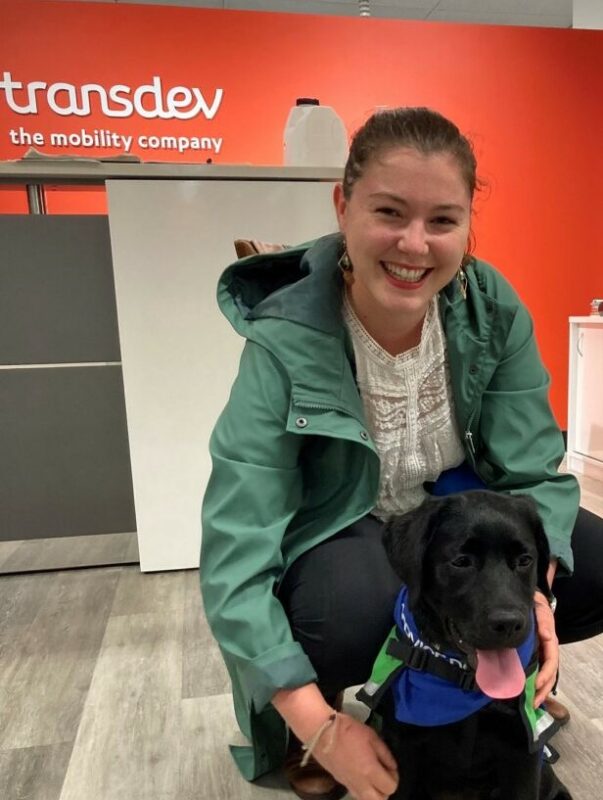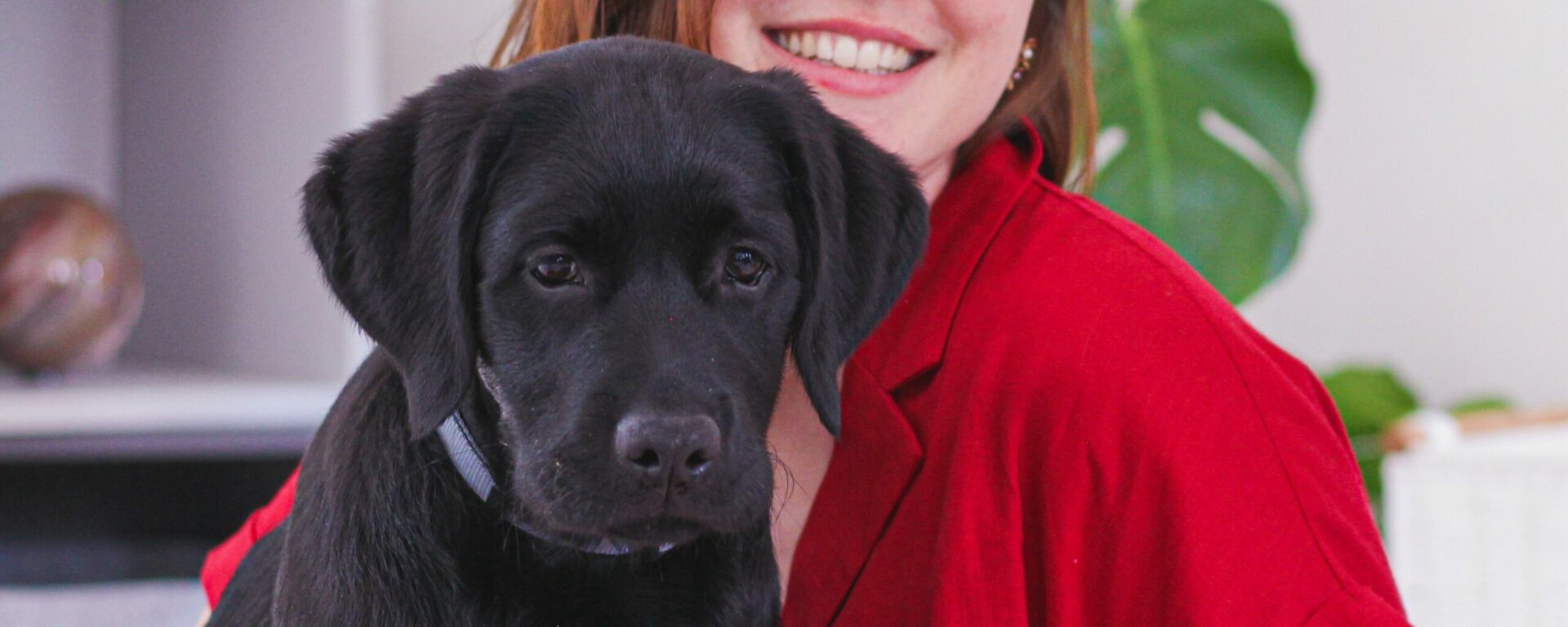That service dogs play an important role in the community to improve the quality of life of many people, and especially while using public transit, no one can deny. But how much do we know about these furry everyday heroes and how to act appropriately around them? In recognition of the International Day of Persons with Disabilities celebrated today December 3rd, we wanted to highlight the topic.
Service dogs can be trained to assist people with diabetes, autism, cancer, and other illnesses. Trained dogs can help people who are visually impaired, deaf, or prone to seizures. Not all conditions of the person are visible, so it is important to have an understanding of their actual function and legal rights to access all facilities, including workplaces and public transit.
Recently, Capucine Heymes, Business Development Officer for Transdev Australia welcomed a Diabetic Alert Dog through Paws for Diabetics, called Shadow. We caught up with Capucine to ask her a few questions about her puppy and service dogs in general.
Can you introduce us a little more to Shadow and what her specific tasks will be as a fully trained service dog?
Shadow is a Labrador cross Golden Retriever; she is now 4 months. This mixed breed is one of the best for assistance dogs, reuniting the calm and loving part of the Golden Retriever to the active and willing side of the Labrador. She has been chosen as the best to become a service dog from a litter of 10 puppies and she is crushing it at her new job as assistance dog!
Shadow is being trained to become my Diabetic Alert Dog. As a type 1 Diabetic, I can face a dangerous situation where my blood sugar is dropping fast, leading sometimes to a loss of consciousness. As a fully trained service dog, she will be able to alert me when my blood sugar level is starting to drop or going high, allowing me to take sugar or insulin on time and prevent me to faint.
Besides accompanying you everywhere you go during the training, including to the Transdev office, what else does her training entail?
She is trained to stay well behaved and focus on me in every situation, because diabetes never pauses, she needs to be able to alert me in the train, on a walk, in an escalator, in a meeting etc. For her to do so, Shadow is being trained to be a calm, listening but also a confident dog. So, she can stop whatever she is doing to come and tell me I am having hypoglycemia.
There are two different types of training: the service dog one where I am taking her everywhere with me and to obedience class, and the medical one where we are doing scent training and exercises for her to have the proper reaction when a medical alert is happening.
Transdev Group is fully committed to providing an accessible workplace and we heard you organized an informational meeting upon Shadow’s arrival. How has the response been from your Transdev colleagues to have Shadow in the office?
Everyone was so excited to meet her but also very respectful. They all understand that Shadow is still young and in training: people need to ignore her and not paying her attention so she can be fully focus on me. Everyone was careful and asking me when/if they can pat her or ‘say hi’ to her.
I was surprised how people were genuinely interested to learn more about Diabetic Alert Dogs, their training, how they detect low blood sugar levels etc. It was very important for me to be able to talk about service dogs around me, how their work is important and how it’s crucial to not interact with them and distract them from what they are being trained.
What is the important thing for colleagues and the general public that comes across you and Shadow?
First, it’s important to remember that service dogs aren’t pets. They have been trained to carry out specific tasks and jobs to assist people with illness or disabilities. This means that you shouldn’t pet or distract service dogs.
People often say to me “oh but it’s just a puppy, she needs to interact with people and other dogs! What a sad life…”.
But service dogs are happy to do their work, to take care of their person, there is nothing more important for them than to look after their owner. Off course they have free time when they can interact and play with other dogs, but a service dog will always be happier to do their work.
So, please, respect the beautiful work they are doing and always ask the owner before doing anything.
How and why did you get involved with Paws for Diabetics?
I have always wanted to have a service dog, even foster one for other associations, so I did some research about Diabetic Alert Dogs here in Australia. I found Paws for Diabetics and what’s convinced me is that you are training your own service dog. Indeed, most of the organisations will give you a fully 2-year trained dog and you need to go through a very long waiting list.
For me, it was so important to build a strong relationship with the dog from a puppy stage and to be involved in the training that Paws for Diabetics seems the perfect organisation for me. I was first putting a lot of pressure on myself, I was scared to make a mistake and ruin the dog’s training, but I am so supported by the association and everything is going well!
Finally, all or our colleagues around the world are bound to come across a service dog like Shadow onboard our vehicles, so what are the most common types of service dogs and what can our colleagues do to make their travel more comfortable?
The most common service dogs are guide dogs and medical assistance dogs but as we are being more and more aware of how amazing dogs are, service dog types are becoming so diverse (assistance to paraplegic person, epilepsy alert dog, diabetic alert dog etc.) so as the breeds used, don’t be surprised if it’s an Australian Shepherd guiding and not a Labrador!
As mentioned earlier, it’s crucial to not distract the dog and not try to call them/ look at them with insistence. Service dogs can be recognised by their vest, often in a blue, green or red colour with the mentions ‘service dog’, ‘please ignore’ etc.
For the drivers, it can be awesome if they can acknowledge that a service dog is on board and to ask the passengers to respect their work. If possible, leave a seat for the person asit can be challenging to manage a dog and some bags in a moving vehicle.
Finally, I know that dogs are cute, especially puppies in training, but please understand that it’s a team working, and they don’t want to be disturbed, even if you just want to ask information on the dog and the training.


